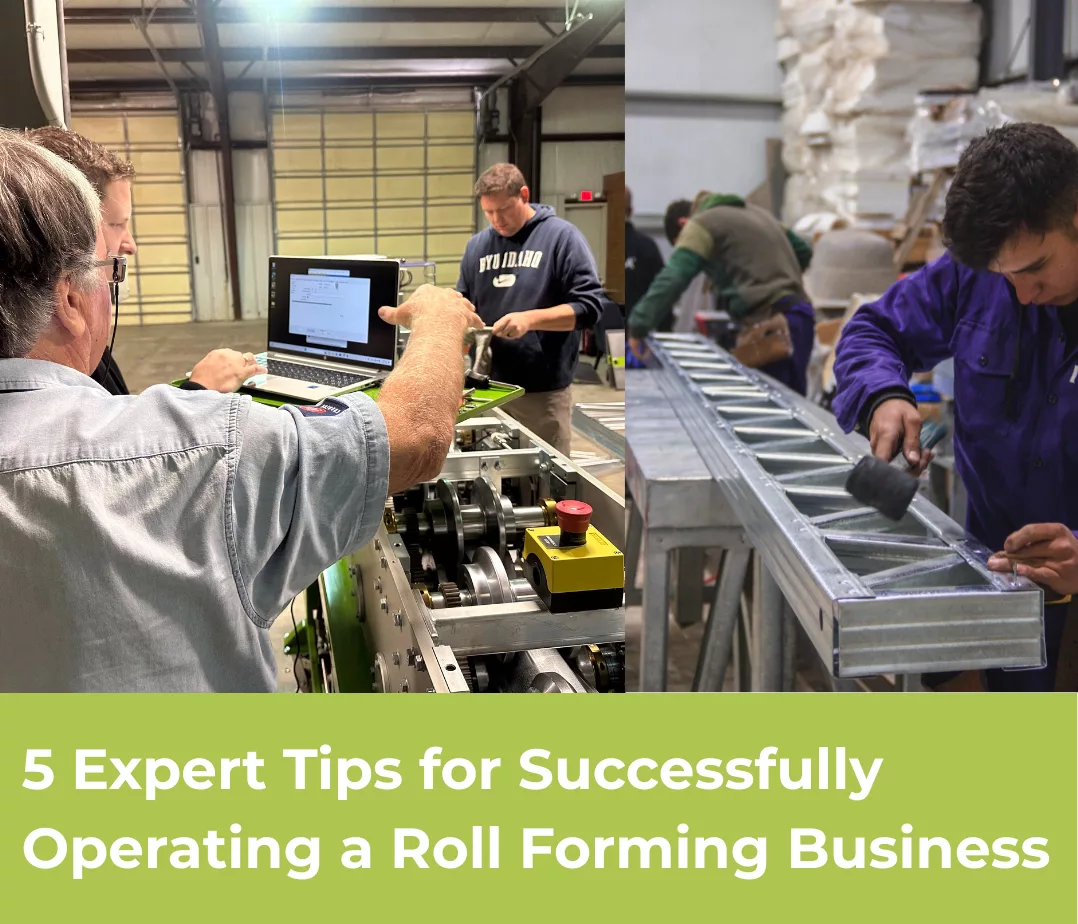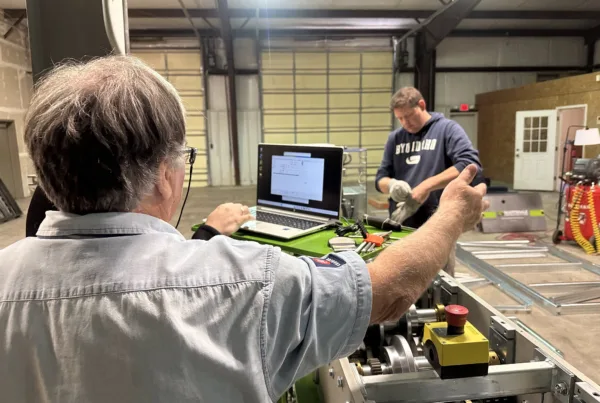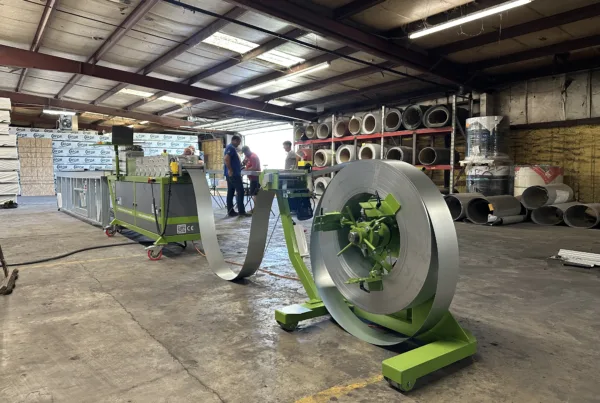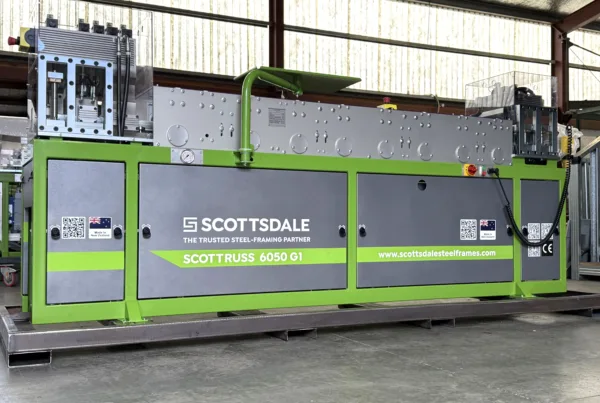Operating roll forming machines efficiently is essential to maximizing productivity, minimizing downtime, and delivering consistent cold-formed steel components for your steel framing needs. Whether you’re producing wall panels, trusses, or floor joists, following expert-recommended practices can make a significant difference in your roll-forming machine performance and finished product quality.
Here are five key tips to help you get the most out of your roll forming system:
Tip #1
Prioritize Preventive Maintenance on Roll Forming Equipment
Proactive maintenance is one of the most cost-effective strategies for keeping your roll forming machine running at peak performance. Rather than waiting for a breakdown, regularly inspect and service your equipment. Small parts, such as a $16 rivet punch insert, when replaced in time, can prevent the failure of a critical $1,200 component.
When operating roll forming machines for steel framing applications, there are several key areas to monitor to ensure optimal performance and longevity. Regular chain lubrication is critical. Greasing and lubricating chains help prevent premature wear on sprockets, which are essential to the smooth operation of roll forming systems.
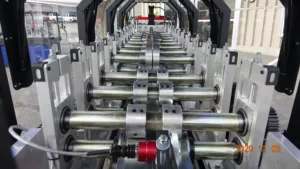
Just as important is maintaining proper chain tension; evenly distributing pressure across all forming rolls reduces stress on individual components and ensures the consistent shaping of cold-formed steel profiles.
Additionally, having essential spare parts in stock can minimize downtime. While many roll forming components are readily available, certain items sourced from overseas may face longer lead times depending on warehouse inventory.
Staying proactive with these maintenance practices helps keep your roll forming machines running efficiently and your cold-formed steel framing production on schedule.
Tip #2
Keep Your Roll Forming Machine Clean
Cleanliness directly contributes to operational safety and machine longevity. A well-maintained machine allows for quicker detection of issues like oil leaks, metal shavings, or loose bolts. These small red flags, when spotted early, can prevent much larger failures.
Maintaining a clean floor and an organized workstation is essential for safe and efficient steel framing operations, especially when working with roll forming machines. A clean environment helps prevent common hazards such as slipping on discarded rivet stems, tripping over offcuts or misplaced tools, and experiencing delays caused by clutter obstructing material flow.
In the context of cold-formed steel production, where precision and speed are critical, even minor disruptions can lead to costly downtime. To support consistent performance from your roll forming equipment, daily cleanups and weekly deep inspections should be standard practice, ensuring both operational efficiency and a safer work environment.
Tip #3
Improve Access & Organization
Time lost searching for tools adds up quickly on the shop floor. Equip your roll forming station with dedicated, clearly labeled storage areas for essential tools such as tape measures, snips, hammers, and drills. Tools not in use should be returned to their designated places immediately.
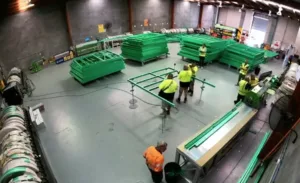 In a steel framing operation powered by roll forming machines, efficient organization plays a crucial role in maintaining productivity. By ensuring that tools and materials are within reach and easy to locate, workflows become faster and smoother, minimizing disruptions during production. This level of organization also reduces the likelihood of assembly errors, which is especially important when producing precise cold-formed steel components.
In a steel framing operation powered by roll forming machines, efficient organization plays a crucial role in maintaining productivity. By ensuring that tools and materials are within reach and easy to locate, workflows become faster and smoother, minimizing disruptions during production. This level of organization also reduces the likelihood of assembly errors, which is especially important when producing precise cold-formed steel components.
Additionally, keeping the workspace well-organized helps lower operator stress, particularly in high-output environments where time and accuracy are critical. Optimizing access and layout around your roll forming equipment directly contributes to a more efficient and reliable steel framing process.
Tip #4
Maintain Laptop That Powers Your Roll Forming Machine
Your laptop is just as important as the mechanical components of your roll forming system. It controls job files, production data, and design-to-fabrication workflows. Regularly maintaining this computer ensures smooth machine communication and uninterrupted production.
Proper laptop maintenance is just as important as mechanical upkeep when operating roll forming machines in a steel framing environment. To ensure smooth communication between design software and production, it’s essential to delete unused files and software regularly to free up memory and improve system performance. Clearing temporary files and cache helps maintain speed, while staying current with software updates, especially those recommended by your system provider, ensures compatibility and security.
Organizing job folders for quick access also enhances workflow efficiency. Neglecting these digital maintenance practices can result in slow system performance or unexpected crashes, which may disrupt your roll forming process and delay steel framing operations.
Tip #5
Ask Questions & Leverage Expert Support
When in doubt, ask. Scottsdale representatives are a wealth of knowledge, drawn from global experience across hundreds of cold-formed steel framing operations. Don’t wait until a problem slows you down; instead, reach out proactively.
When operating roll forming machines for cold-formed steel production, staying connected with your Scottsdale representative can be a valuable advantage. These experts can provide guidance on tooling upgrades that enhance efficiency, recommend software shortcuts to streamline operations, and suggest cost-saving consumables that reduce overall expenses.
They also offer advice on adjustments that improve profile quality and minimize wear on equipment, key factors in maintaining high standards in steel framing. Drawing from extensive experience across global roll forming applications, their insights can help you avoid costly mistakes, refine your production process, and maximize output in any cold-formed steel operation.
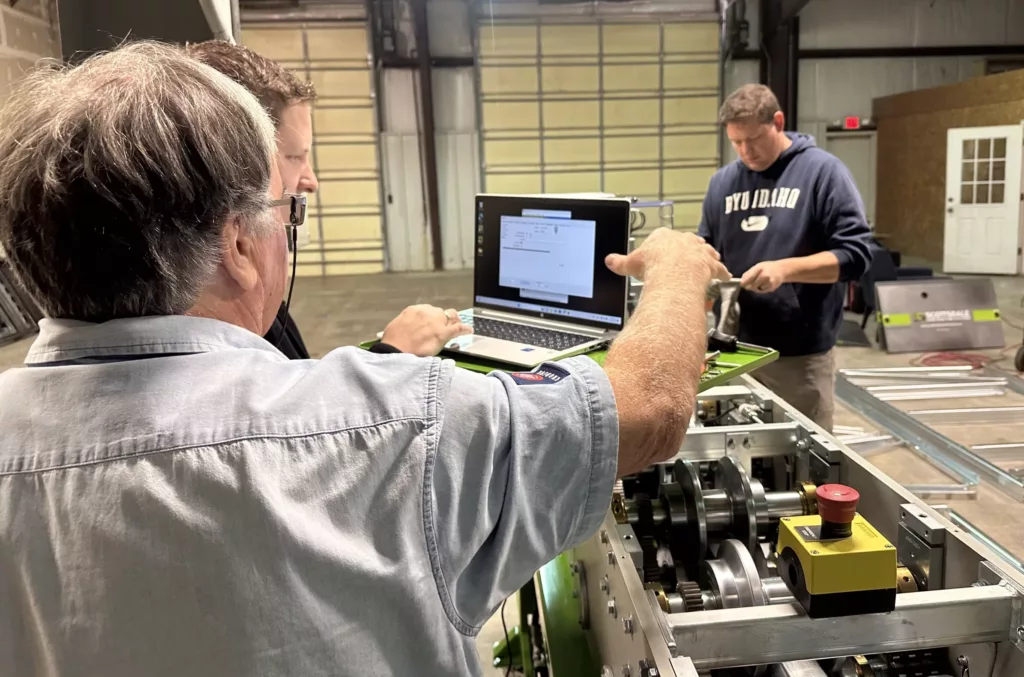
Bonus Tip
Ensure Well-Formed Profiles for Easier Assembly
Precision in roll forming equals precision on the job site. Profiles that aren’t straight or square, especially those with twisted webs or bowed flanges, can slow down assembly and reduce frame quality. Misaligned holes may require extra force to secure, which increases labor time and risks damage.
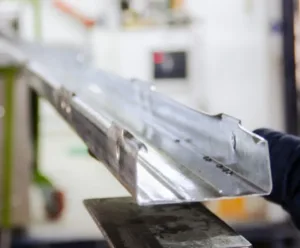 In any steel framing operation using roll forming machines, consistent quality control is essential to ensure smooth assembly of cold-formed steel components. Regularly checking for true 90° bends in your C-section sides helps maintain structural accuracy, while verifying even roller pressure from side to side prevents twisting or deformation during the roll forming process.
In any steel framing operation using roll forming machines, consistent quality control is essential to ensure smooth assembly of cold-formed steel components. Regularly checking for true 90° bends in your C-section sides helps maintain structural accuracy, while verifying even roller pressure from side to side prevents twisting or deformation during the roll forming process.
Additionally, monitoring for consistent flange and lip dimensions across batches ensures uniformity, which is critical for efficient frame alignment and fastening. The straighter and more precise your cold-formed steel parts are, the faster and easier your framing will go up, ultimately saving time, reducing labor effort, and lowering overall construction costs.
Scottsdale, Your Trusted Partner in Steel Framing Success
Roll forming is the backbone of efficient steel framing production. By investing in maintenance, cleanliness, organization, digital hygiene, and expert support, you ensure that your roll forming machines operate reliably and consistently. These small, expert-backed adjustments lead to long-term success in cold-formed steel construction.
At Scottsdale, we’re here to support you at every step. Whether you need help sourcing roll forming machine parts, staying on top of preventive maintenance, optimizing your software and job files, or refining your design for better value engineering, we’re just a call or message away. We also assist with fabrication techniques, assembly best practices, safety guidance, and more. If you have a question, Scottsdale has the answer. Reach out anytime, and we’re committed to helping your cold-formed steel framing operation succeed.
Contact us at sales@scottsdalesteelframes.com or call us at +1 (888) 406-2080 for more information.
